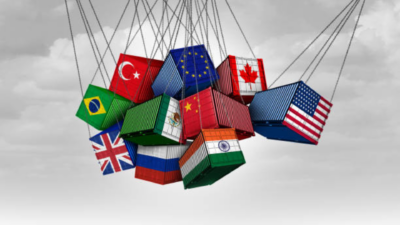Investors beware: trading costs set to rise, says report
(pictured: Michael Aked)
When investors think about mean reversion they normally think about asset valuations. They should also think about liquidity, because transaction costs associated with liquidity also mean revert. They are currently at all-time lows and are set to shoot back up.
A report by Research Affiliates of the US says that the costs to trade in the US equity market are now back to historical lows. At the end of August 2016, the cost of market impact – the largest component of transactions costs in equities trading – on average was 1.3 per cent, consistent with the “loose-money” environments of 2006 and 2013.
But the smart beta quant manager from Newport Beach, California (where PIMCO is also based) says that historical evidence shows trading costs can rise quickly and “the impending return to normal levels from current levels could shave 5 per cent off the price of US stocks”.
Because these costs, due to shifts in stock market liquidity following tactical changes in monetary policy, tend to be mean reverting they are also predictable.
“[Liquidity’s] value can be inferred up to 12 months in the future, allowing time to position portfolios for greater protection or potential profit,” the report – written by Research Affiliates’ Michael Aked and Jim Masturzo – says.
“To profit or protect our assets from the vagaries of the costs to trade, we need to understand what changes in liquidity and, consequently, in equity returns might be in store for us. Luckily, market liquidity is strongly mean reverting. Unlike asset prices in general, for which mean reversion is a multi-year phenomenon, deviations in market liquidity away from normal levels are very short lived, often lasting only weeks or months.”
Aked has strong Australian connections. He worked for UBS Asset Management in Sydney as head of asset allocation and then Sunsuper as a portfolio manager. He became director and head of asset allocation at Research Affiliates in the US in 2012.
For Australian investors, the forecast rise in illiquidity in the US share market, which will result in higher trading costs, has implications for their global portfolios. For the truly long-term investors among them this should not be a problem. But who among them is truly long term?
The paper says: “The pops and diffusions in the liquidity of the securities markets can deliver swift and painful blows to investors caught on the wrong side of an unexpected shift in market sentiment. But they may also present short-term investment opportunities for well-managed portfolios.
“Investors stand to benefit by maintaining a heightened awareness of the current level and trend in market liquidity so as to protect against and potentially profit from changes in the level or trend. Today, with costs to trade at lows seen only in similar loose-money environments, the likely trend, as the Fed contemplates higher rates, is up. As short-term interest rates rise, illiquidity rises, costs to trade rise, and equity prices fall.
“Now is the time to consider positioning your portfolio ahead of expected higher costs to trade and lower equity prices.”









